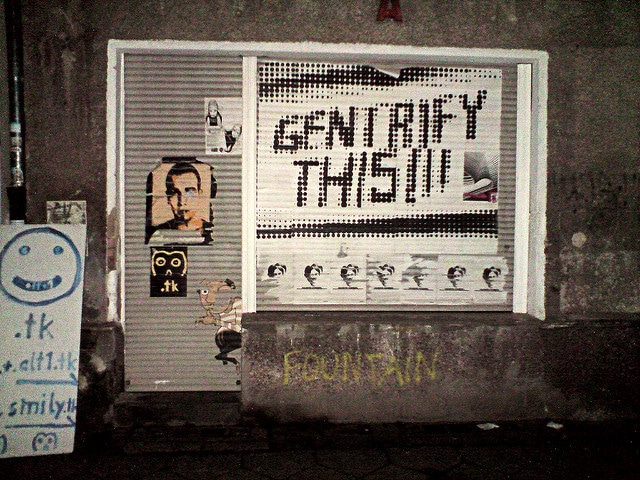Moving into a new neighborhood, especially in New York City, means an exciting time to try new things, make new connections, and take in new sights. It also means getting to know a new community, a new area, and new people. For many of us, the neighborhoods we’re moving to are ones we’d never have considered moving to just five or ten years ago.
Moving to a new hot neighborhood can be exciting, but when real estate trends change the fabric of that neighborhood, it’s time to start talking about your effect on your surroundings. In other words: this is how not to gentrify your new neighborhood.
Understanding Your New CommunityUnderstanding Your New Community
Gentrification is primarily associated with a steep increase in housing prices as more affluent people move into diverse or working-class neighborhoods. While there’s probably not much you can do about the price of housing in a neighborhood in New York, you can understand how your presence affects your community. How you participate in your neighborhood will determine whether you are part of the problem or part of the solution.
It’s not the color of your skin or the contents of your wallet that makes you a gentrifier, but the way you interact with the people and places that existed before you arrived. A person who gentrifies has an adversarial relationship with their new community. Reach out to the people around you. Say hello and introduce yourself to your neighbors even if they don’t look or sound like you. Realize that everyone on your block is your neighbor — not just those within a similar tax bracket. New York is still full of diverse communities with many different people, backgrounds, and lifestyles.
Appreciate Your New NeighborhoodAppreciate Your New Neighborhood
There are probably a million reasons you chose to move to where you did. A great house with the perfect number of bedrooms, a great price, access to transportation, and all the other things on your wish list. You probably also fell in love with the neighborhood. The architecture, the streets, and all of its distinct character. When a neighborhood becomes desirable, construction, new shops, and new businesses follow. It’s not cliché that a new Starbucks on the corner means gentrification is in full swing.
But what about all those shops that were there already? Those stores and businesses were already there when you fell in love with your new neighborhood. Hopefully, they’re still there and can benefit from your spending. Shopping local doesn’t mean just shopping on your block; it means shopping at stores that have been there for the long haul. Shop at stores that have been around since before you became a resident, not just ones that showed up because you’re a resident.
Become a part of your new community. If you think you can change it for the better, there are community groups you can join, organizations that have likely been working hard to improve the neighborhood long before you got there.
Recognize the history of your new neighborhood and resist the urge to push your agenda on people that call your new neighborhood home. Acknowledge them, learn from them, and respect them. If that doesn’t sound like something you can do, there’s probably a great home on a cul-de-sac in the suburbs waiting for you.

